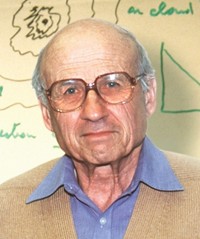Advertisement
Grab your lab coat. Let's get started
Welcome!
Welcome!
Create an account below to get 6 C&EN articles per month, receive newsletters and more - all free.
It seems this is your first time logging in online. Please enter the following information to continue.
As an ACS member you automatically get access to this site. All we need is few more details to create your reading experience.
Not you? Sign in with a different account.
Not you? Sign in with a different account.
ERROR 1
ERROR 1
ERROR 2
ERROR 2
ERROR 2
ERROR 2
ERROR 2
Password and Confirm password must match.
If you have an ACS member number, please enter it here so we can link this account to your membership. (optional)
ERROR 2
ACS values your privacy. By submitting your information, you are gaining access to C&EN and subscribing to our weekly newsletter. We use the information you provide to make your reading experience better, and we will never sell your data to third party members.
People
James T. Grady-James H. Stack Award for Interpreting Chemistry for the Public
by Rick Mullin
February 20, 2012
| A version of this story appeared in
Volume 90, Issue 8
Sponsored by ACS
The French writer Arsène Houssaye coined the term “forty-first seater” to refer to writers who, usually because they were rejected, never became members of the 40-seat Académie Française. They would include Jean-Jacques Rousseau, Marcel Proust, Honoré de Balzac, Jules Verne, and Jean-Paul Sartre, writers who over the years made way for the likes of Georges-Louis Leclerc, Comte de Buffon, and other lesser-known essayists at the Palais de l’Institut de France, in Paris, seat of the grand Académie.
This is not a unique injustice. At an informal annual meeting of winners of the James T. Grady-James H. Stack Award in Bar Harbor, Maine, for example, the question of “who should have won?” invariably arises, according to Michael Woods, a senior science writer at ACS and the 1978 winner of the award. Attendees of this summer’s reunion, however, will likely be able to proceed directly to the next question, because the 2011 winner is Paul Raeburn, whose name has long topped the list of paragons who hadn’t yet won.
As the science editor of the Associated Press news wire service, a science and technology writer for Businessweek, a contributor to science programs on the Public Broadcasting Service and National Public Radio, the author of several books, and a media critic for the Knight Science Journalism Tracker, Raeburn has been interpreting chemistry for an audience for more than 30 years.
Raeburn’s educational background is in physics, political science, and jazz piano. He received a bachelor of science degree in physics from Massachusetts Institute of Technology but decided against a career in the field. He went to work as a pianist, which, he said, created the perfect environment for becoming a writer: “a meager salary and nothing to do during the day.”
Raeburn’s passion for writing developed, he says, when he landed a full-time position as a general assignment reporter at the Lowell Sun in Lowell, Mass., in the 1970s. “Because of my MIT background, they sent me to cover stories on the energy shortage and nuclear power plants,” he says. “I became a science writer by virtue of my assignments.”
Challenging the stereotype of the scientist as an aloof, elitist technocrat disdainful of the public’s ability to understand technical matters, Raeburn says he sees most scientists as adept at communication and anxious to reach out. “My entire career has been built on the willingness of scientists to take a lot of time—hours—to explain complicated subjects,” he says, noting that an increasing number of scientists have succeeded at skipping the middleman: “Where Carl Sagan once stood, a thousand blogs now bloom.”
Raeburn himself blogs, in addition to teaching at Florida Atlantic University and freelancing for various journals, most recently Discover.
If Raeburn, who is 61, is a latecomer to the convocation of Grady-Stack recipients, he is unfazed. His experience has shown him that recognition often eludes the accomplished. Take chemists. “They are the unsung heroes,” he says. “A lot of what they do is so quickly incorporated into our daily lives that it is easy to miss the extent of their achievement.”
Raeburn will present the award address during a presidential event on Communicating Chemistry to the Public.





Join the conversation
Contact the reporter
Submit a Letter to the Editor for publication
Engage with us on Twitter